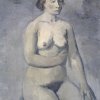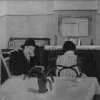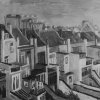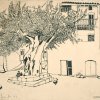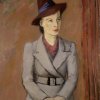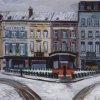The pictorial realism of the young Van Lint demonstrates readily bold formal and chromatic simplifications, inherited both from Ensor and from the Brabantine Fauvists. Like them, and benefiting from an innate sense of expression through color, the young painter becomes part of this pictorial renewal manifested also by artists such as Gaston Bertrand and Anne Bonnet, who joined him at the Academy of Saint-Josse. Already labeled in 1938 as Young Art (Art Jeune) in the Brussels Gallery Atrium, the aesthetic affinities are reinforced between these artists, which leads, following their exclusion from the Spring Salon (Salon de Mai), to group with some young fellow students of the Academy under the name of The Free Way (La Route Libre), and organize in 1940 an exhibition at the Toison d'Or Gallery in Brussels.




